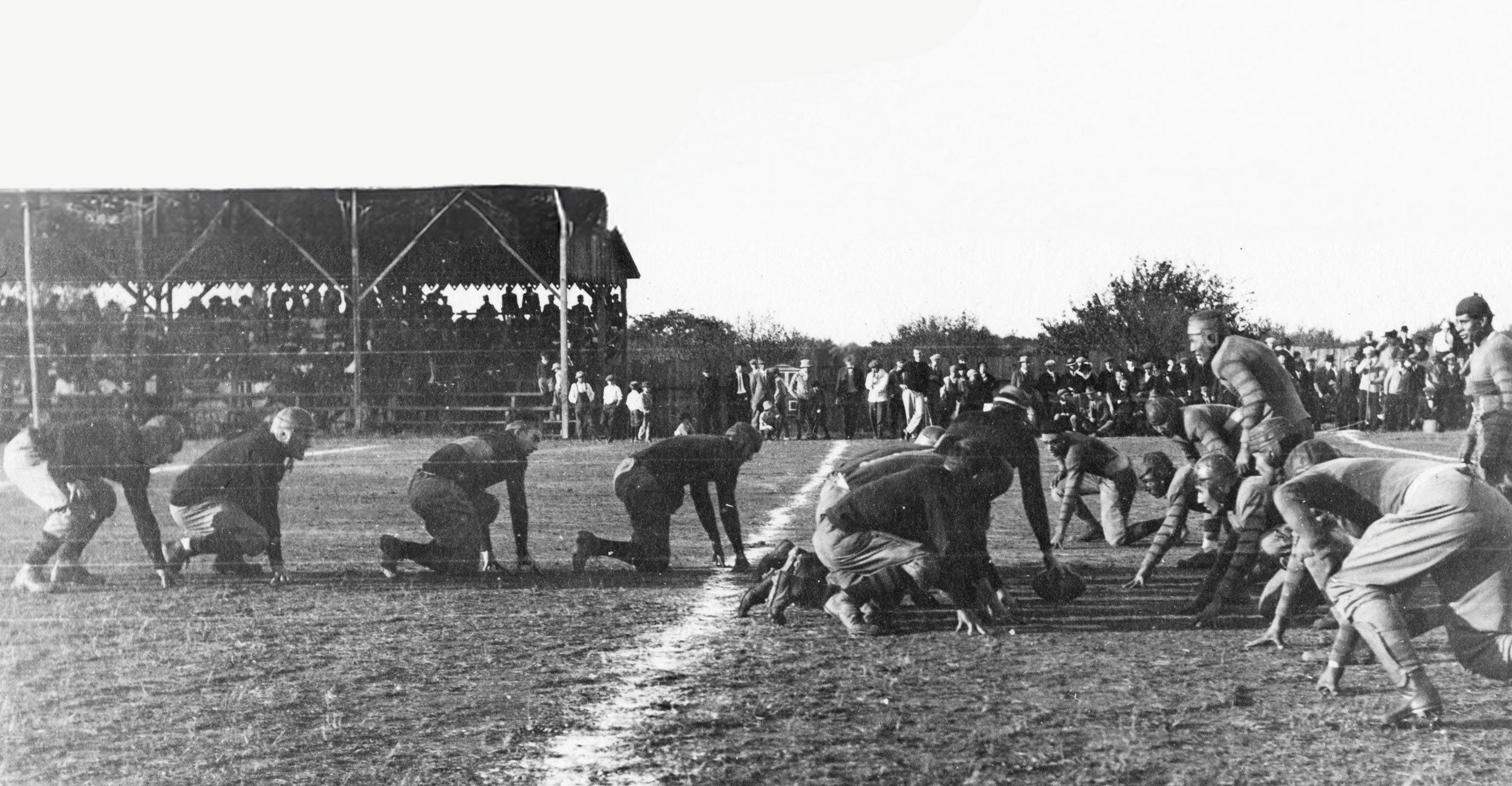
Cowboy Chronicles: Setting the facts straight about a legendary OSU football play
Thursday, December 21, 2023
Media Contact: Mack Burke | Associate Director of Media Relations | 405-744-5540 | editor@okstate.edu
Running 99 yards from the line of scrimmage for a touchdown is an impossible record to break. It could be duplicated, but never surpassed.
Recording and compiling athletic records for individuals and teams can be a difficult and daunting task. Few athletic records are permanent, and most will be broken at some point. Others may only exist in the fog of old memories.
This is the story of a rushing touchdown 115 years ago, reported as gaining the most yards from the line of scrimmage on a single play in the history of (Oklahoma A&M College/Oklahoma State University) football and a record which would never be broken. It involved an alumnus who was one of the greatest student-athletes and most successful coaches from the institution’s past with a remarkable reputation for fairness and honesty.
Some records need to be corrected, and this story is one of those.
The Season
In the spring of 1908, OAMC hired its first paid coach, Ed E. Parry, whose teaching responsibilities exclusively involved training OAMC student-athletes.
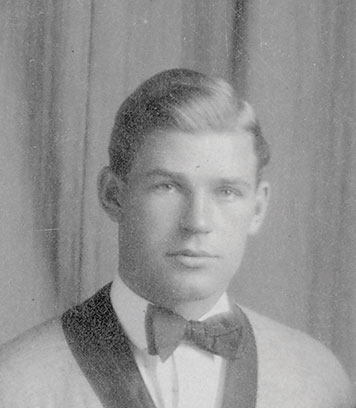
Funding for the position came in part from the college regents and from an athletic association whose officers were mostly college students serving as managers for various teams.
Over 100 students were members of the association and dues were 50 cents per semester or $1 per year. Memberships provided access to all sporting events. They collected additional revenue from fans purchasing single game tickets.
Parry graduated from the University of Chicago, where he played football and threw the discus. He acquired coaching experience at South Dakota State College of Agricultural and Mechanic Arts before serving as an assistant coach at the University of Kansas.
Over 6 feet tall and weighing 215 pounds, his physique was as striking as his coaching credentials. Parry coached baseball, track, football and basketball.
Upon his arrival in Stillwater, Parry initially worked with the track team. In late spring, he traveled with limited finances and a small team of six men to Austin, Texas, for the Southwest Track and Field Championships. The team included David Holmes, Bill Potter, C.A. Wood, Obie Baird, Walter Jessee and Ed Gallagher, several of whom participated on the football team in the fall. The team took top honors beating much larger squads from colleges in Texas and Oklahoma. Gallagher, considered the fastest man in the Southwest, won the 100-yard dash in 9.8 seconds. For several decades, he also held school track records in the 220-yard dash and 220-yard low hurdles.
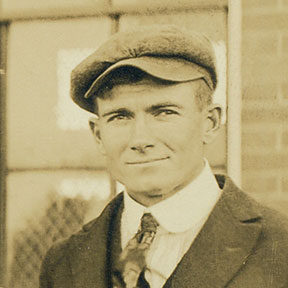
Excitement on the OAMC campus had been building all summer in anticipation of the football season. Under a volunteer coach the previous year, the team went 1-3-1. OAMC president John H. Connell led a football rally on Sept. 10 featuring Parry and team members three weeks before the team’s first game and four weeks before its home opener with the University of Oklahoma. Articles and editorials in the college newspaper provided updates on the football team’s practices, enthusiastically supported the players and encouraged the student body to attend the games.
The football season started poorly with losses to Central State College in Edmond, Oklahoma; OU; and Northwestern College in Alva, Oklahoma. The challenging season turned around in late October with the team winning four of its last five games.
On Nov. 12, OAMC secured a victory at Southwestern College in Winfield, Kansas, on its first trip outside Oklahoma in the history of the program and then traveled two days later to Manhattan, Kansas, for the first competition against Kansas State Agricultural College on Saturday afternoon. Gallagher was team captain and starting halfback but missed the first game in Winfield. He joined the team on Thursday evening and Friday morning, they traveled to Wichita for an early practice at Fairmont College before heading north to Manhattan.
The Game
The football game vs. the Kansas Aggies started at 3 p.m. on Nov. 14. There were two contemporary versions of the events for the game that day, one from the Kansas State student newspaper, “Students Herald,” published on Nov. 18 and a second version from the monthly OAMC student periodical, “The Orange and Black,” published later in November.
In the Oklahoma State version, Kansas State kicked off and Gallagher returned it for a 20-yard gain. After two plays, OAMC went into punt formation and Gallagher, who was the team punter, either faked the punt or saw an open field in front of him. He carried the ball for 85 yards and was tackled just shy of the goal line. On the next play, Gallagher carried the ball on a halfback plunge and scored.
Only a few minutes into the game, OAMC was ahead 5-0. The reader might notice that the total yardage adds up to more than 100 for Gallagher to make this touchdown. The total yards gained, the decision to punt the ball on third down and the score will be explained later.
The “Students Herald” provided a more detailed account of their 40–10 victory published four days after the game.
In the opening series, Harry Bates kicked off for Kansas State from midfield, the ball traveled 40 yards and was returned five yards to the 20-yard line. Then Gallagher took the ball on the second play and ran 85 yards to the 3-yard line, where it was pushed over on third down. OAMC led 5–0.

Both accounts agreed that Gallagher had a long run of 85 yards, but they differ slightly on the plays preceding this run and the final touchdown sequence. By May 1909, Gallagher’s run reached 90 yards when listed in the annual review of OAMC athletics. In summary, Gallagher had carried the ball over 99 yards for a touchdown, but in three plays, the longest being 85, or 90 yards. Neither version reports any additional Gallagher touchdowns or long runs, and OAMC quarterback Albert Stebbins ran for the second, and only other touchdown the Oklahoma State team scored that afternoon.
The Error
The “foot” in football was the key to success at this time, either in playing for field position utilizing punts or in the ability to kick field goals and extra points.
Before 1912, only three downs were allowed to gain at least 10 yards and a new first down. The field length was 110 yards with no end zones, just a goal line at each end of the field.
After 1912, the number of plays for a first down increased to four and field lengths were standardized at 100 yards. With the increased use of passing plays, it had become necessary to add 10-yard end zones at either end of the field to allow for passing plays over the goal line but limited to 10 yards behind the goal line. Before 1912, the ball was placed at midfield for kickoffs, which would be the 55-yard line, and after 1912, it was placed on the 40-yard line.
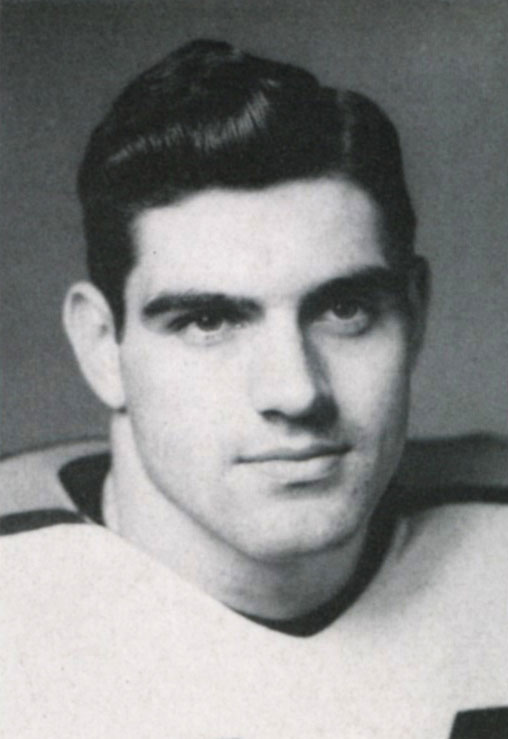
Scoring also changed in 1912. Touchdowns previously had been awarded five points and field goals four points with an extra point possible after a touchdown with a successful kick through the goal posts. After 1912, touchdowns were increased to six points and field goals reduced to three points.
Kansas State outgained OAMC that November day with 750 rushing yards to only 200 yards for the visitors. Kansas State completed four passes in eight attempts for 85 yards with no pass completions by OAMC. Gallagher punted the ball 19 times and Bates 13 times for a combined 1,080 yards. Pass plays totaled less than 9% of the yardage gained on the day.
When Bates initially kicked the ball 40 yards from midfield, Gallagher received it at the 15-yard line and returned it five yards to the 20-yard line. There was no mention of lost yardage before Gallagher made his 85-yard run just short of the goal line and scored within the next few plays. It was certainly not a 99-yard run for a touchdown on a single play from scrimmage.
Over time, the details for this game were lost, became cloudy or modified. An OAMC rushing record that could never be broken did not happen.
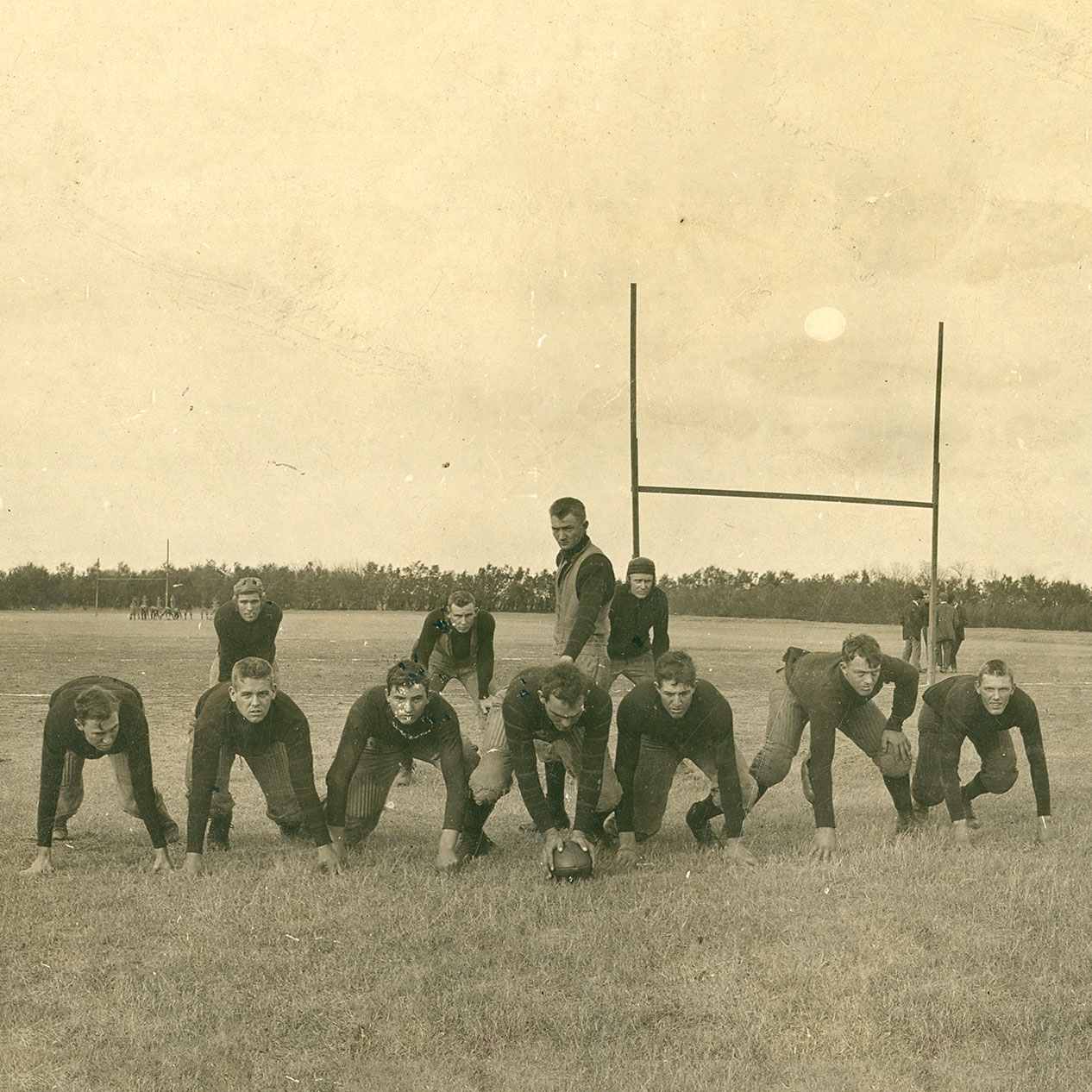
In the 1940s and ’50s, Otis Wile, writing for the “Stillwater News Press,” mentioned the 1908 Kansas State game and referred to Gallagher’s touchdown at the beginning of the game, but no reference to the yardage. However, on October 17, 1953, OAMC halfback Dorsey Gibson ran for a 97-yard touchdown when the team was playing an away game. Wile stated this play might “set a new record for a long run from scrimmage by an A&M player.”
A few weeks later, Wile revised his statement after hearing from retired Methodist minister Rev. Clark M. Oursler, who had been a sophomore member of the 1908 football team. Oursler claimed that late in the Kansas State game, the football was on the 1-yard line and his feet were in the endzone when he hiked the ball to Gallagher, who ran the length of the field for a touchdown. The myth was born.
A few years later, the “Daily Oklahoman” published an article which reinforced the myth with the statement that Gallagher “ran the full length of the lot for a touchdown.” Gallagher might have insisted on correcting these errors when first published, but he had died in August 1940.
The Aftermath
In the late 1960s, Wile wrote a manuscript describing the history of OSU’s athletic programs. He discovered the Gallagher touchdown error, noting the touchdown occurred over three separate plays. However, Doris Dellinger, citing Wile, missed this detail in her OSU Centennial Histories book on “Intercollegiate Athletics” and stated: “Gallagher’s 99-yard run in that game still would stand as a school record.”
Other writers, OSU football media guides and the internet have replicated the error ever since.
For 70 years, Gibson unknowingly held the record for the longest rushing play from scrimmage in the history of OSU football after running 97 yards for a touchdown in a 14-7 victory over the University of Houston.
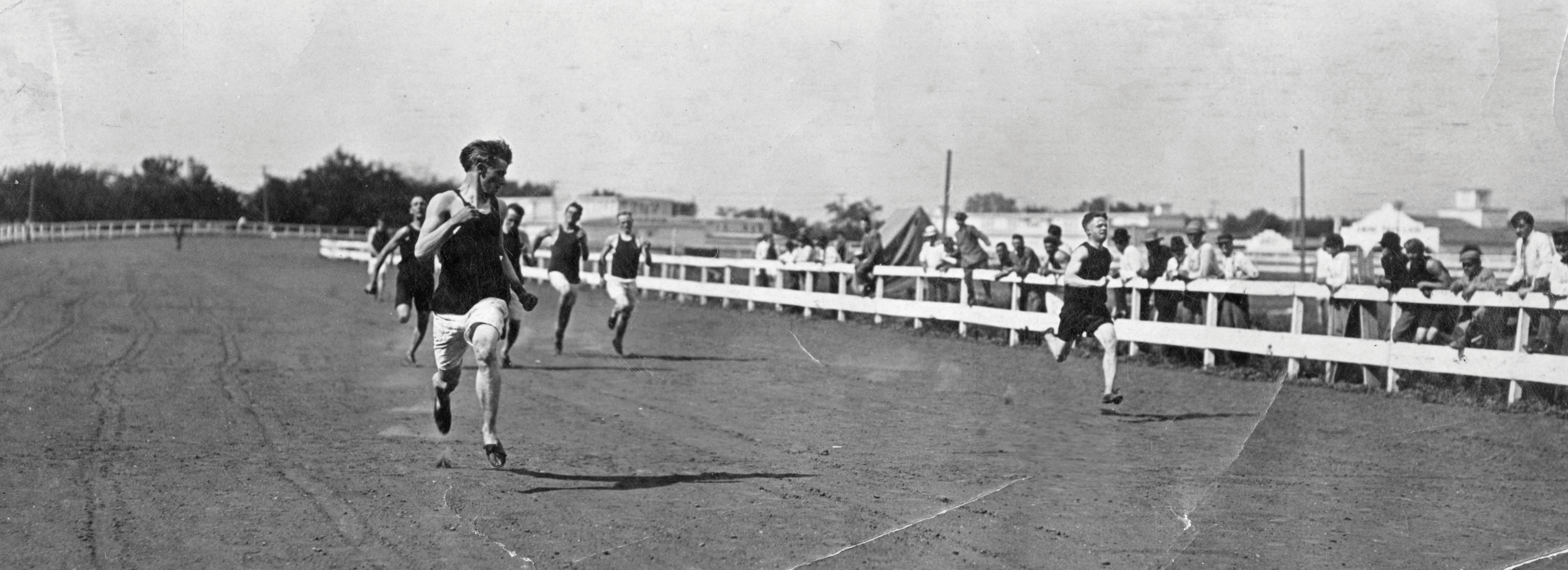
Taking a handoff from the 3-yard line with two minutes and 19 seconds remaining in the game, he raced to the opposite end zone for his second touchdown of the day. All plays required team effort and credit should also go to Ken McCullough, who provided key blocks downfield during the second and longest touchdown run. Gibson passed away in February 2023 at the age of 91 having led a long and meaningful life, but never knowing of his grand achievement in OSU football history, thinking that he only had the second longest run.
Gibson’s uncelebrated rushing record now, however, has the possibility of being broken someday by one or two yards.
Photos by: OSU Archives
Story by: David C. Peters | STATE Magazine
